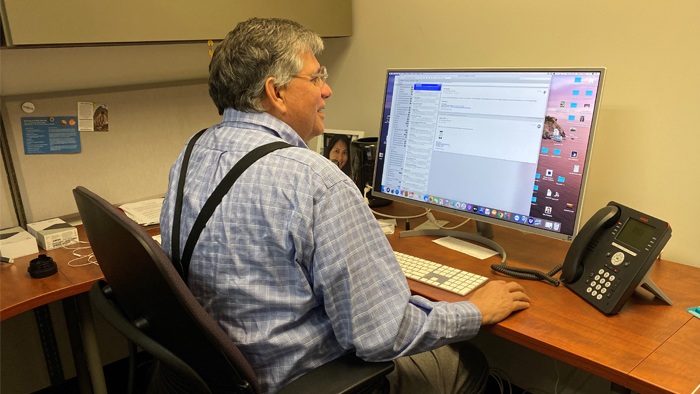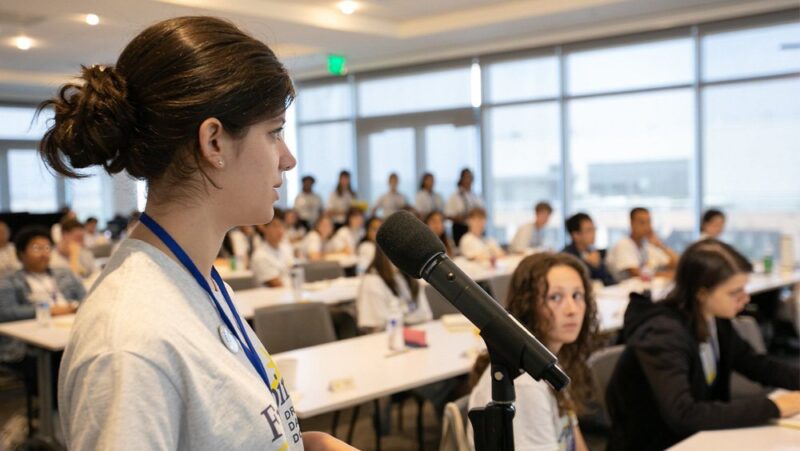Guest Perspective: Free Press, Diversity and the Digital Age

We like to joke that Indian Country Today (ICT) is a 40-year-old startup. It began as The Lakota Times newspaper at Pine Ridge, South Dakota. Since then, it’s been a magazine, a digital news site and it has moved from South Dakota to New York City to Washington. ICT is now based at the Walter Cronkite School of Journalism and Mass Communication in Phoenix.
We now have a pretty good idea of our mission. We are a daily, digital newspaper and we produce a daily television broadcast for public television stations. We are also a nonprofit, independent news enterprise.
We still call ourselves a newspaper. We have daily budget meetings where we debate the cover. We have a schedule, and we deliver to readers in any format that’s useful. That said, 80% of our readership is on a mobile device.
We have learned a few things along our wild path.
First: We love being independent and nonprofit. Once you start with the idea that the work of the press is a public service, then it makes sense to give away that content for free. We have no subscriptions, and we encourage other media to pick up our stories and use them — for free.
Second: There is a hiring story not being told. Every week a story comes across my desk about layoffs in newsrooms. It’s an unfortunate narrative about loss and a changing media landscape that’s not as good as what once was. I reject that idea.
Indian Country Today’s story has been all about growth. We have hired more than 20 new journalists in the past couple of years and we are on track to double that number again. And every one of those new reporters and producers is Indigenous.
This is important because every story about loss should also reflect innovation. We are not alone as an old and new entity. We are not the only ones adding to the ranks of reporting. I don’t want to discount those losing their jobs at newspapers. But the other side of the story is worth telling, too.
For most of my career I have worked diligently to diversify the industry and any newsroom where I have worked. Yet if you look at newspapers from the 1970s, when a goal was set to reach parity with the changing demographics of the country, well, let’s just say the needle has not moved. We all know the reasons: There are not enough openings; my least favorite, “we can’t find anyone;” and it’s an industry in turmoil.
Yet there is another way to approach this. ICT has “diversified” the stories in the press with strong reporting and editing by Indigenous authors. We have partnerships with The Associated Press, Underscore and the Institute for Nonprofit News, and are working on several more such arrangements. The idea is that our copy can stand on its own when it’s published by other newspapers.
My favorite story is something I wrote for the 50th anniversary of the 1971 end of a government policy called “termination.” It was a plan to terminate tribal treaties and break up the reservations. That policy ended with the Confederated Tribes of the Colville Reservation in Washington state voting to reject the “offer” of termination.
My piece on that episode was some 5,000 words. (Makes sense for an Indigenous publication, right?) Yet The Associated Press picked up the lengthy story and it was carried across the country by newspapers that had never heard of the termination policy or its implications.
As I wrote, ICT’s story has been about growth. And we learn more about that every day. Our monthly audience is now about 800,000 readers and we have 1.3 million page views a month. Our top demographic is ages 25-34 and our readership is 60% female.
That’s why a digital newspaper makes so much sense. A generation ago we could have started a national newspaper from scratch. It would have been expensive, and even if we had the resources, I can’t imagine that we could have built an audience so quickly.
Ogden Nash once wrote a poem about newspapers. “I find it very difficult to enthuse / Over the current news,” he wrote, “because there has never been an era when so many things were going so right for so many of the wrong persons.”
It’s a lot of fun to be that wrong person.
Mark Trahant is editor-at-large of Indian Country Today. He is a citizen of the Shoshone-Bannock Tribes of Idaho. He is a member of the American Academy of Arts and Sciences.
Recording Police: First Amendment Right or Arrestable Offense?
How the Free Spirit Conference Fosters Student Press Freedom
Related Content
2025 Al Neuharth Free Spirit and Journalism Conference
All-Expenses-Paid Trip To Washington, D.C.
June 22-27, 2025
Skill-Building
Network Growing
Head Start On Your Future

